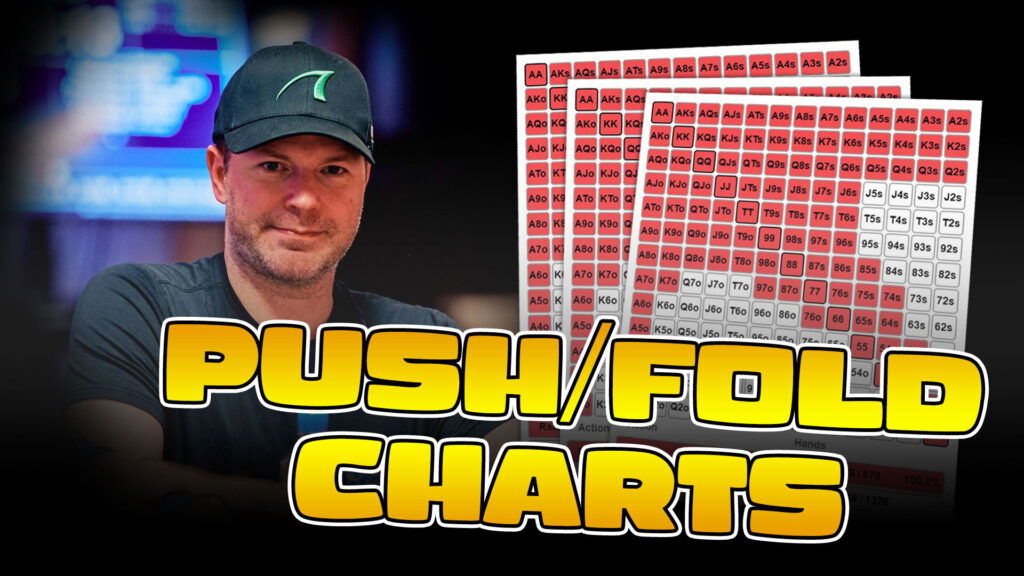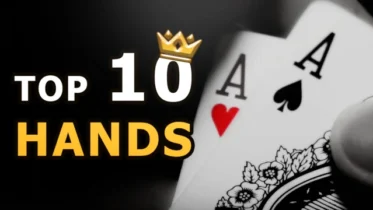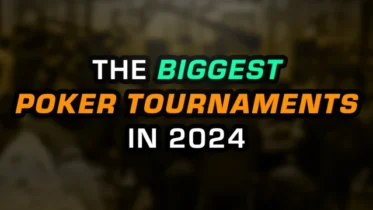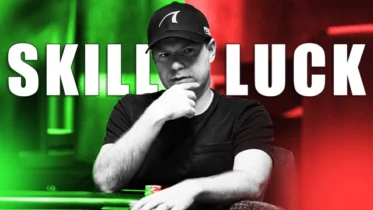All poker players make mistakes, but by and large, small stakes poker players make more mistakes. Why is this? Well, a player who makes relatively few mistakes will find themselves handily beating those who make more errors. That player may then choose to move up stakes, where they can win more money. The players who continue to make those mistakes are “trapped” in the lower stakes games.
If you are playing small stakes games, and aspire to move up or just want to improve your win rate, you must learn to make fewer mistakes than your competition. Since there are innumerable aspects of poker to study, you can’t focus on all of them at once. Pick a handful, improve those, and then move onto the next batch.
In this article, I’m going to cover three areas that don’t get as much attention as “sexier” topics. But, all three share the feature of being almost ubiquitous across low-stakes poker players.
Mistake #1: Poor Game Selection
Let’s suppose that you and I are strolling through a casino, and decide to play some blackjack. We see two tables that offer the betting limits we want. At one table, the felt says, “Natural 21 pays 3:2.” At the other table, the felt says, “Natural 21 pays 6:5.”
“Which table would you like to play at?” I ask.
You look at me askance.
“Do I look like the dumbest gambler in the casino?”
No, you certainly don’t look like the dumbest gambler in the casino, because the 6:5 blackjack tables are full of people, even when there are 3:2 tables available. The truth is, most low-stakes poker players are as insensitive to the quality of the game they’re in, just as blackjack players are ignorant to the payout they get on their natural 21’s. Unfortunately, poker tables don’t have a sign on the felt telling you your EV at that table. But you can learn to spot the signs of a good game – here are three important ones.

Make the best preflop decisions with Jonathan Little’s Push/Fold Charts!
Happy chatty players
Mike Caro talked about this during the 1980’s, and it’s still true today: a poker game with happy, chatty, drinking players is a good game.
The great thing about this sign of game greatness is that you can see it as you stroll by. If players are laughing, telling jokes, drinking, and generally having a good time, then they are focusing on the entertainment value of the game rather than its dollar EV. This is the perfect game to join.
Conversely, if nobody is talking, and everybody is on their phone with earbuds, it’s unlikely to be a good game. Either you have “for profit” players grinding out their hourly income, or people watching a movie while waiting to get dealt pockets jacks and better. If the movie gets boring, maybe they’ll play AQ.
Not only are fun, talkative games the most profitable, they’re also – wait for it – the most fun. If you’re going to spend five hours of your life at a poker table, you should get something more than five hours of expected income. You can maximize both $EV and “Life EV” by picking a happy table.
Big stacks
You can’t win money that isn’t on the table, and another metric of qame quality you can spot from the rail is the stack sizes. If everybody is nursing a minimum buy-in, this is not your game. Big stacks also make people play more loosely – they feel that they have extra chips to splash around.
Mistakes
Maybe the most famous saying in poker: “If you can’t spot the fish in 30 minutes, the fish is you.” On the flip side, if you can spot mistakes being made left and right, that’s a place to make money. Sometimes you can even see this without being in the game.
Suppose you walk past a table and see six players limp to the big blind. Then the big blind raises to twice the big blind, four of the six players call, but two fold. This is equivalent to a blackjack table offering a bonus of 2:1 payouts on all natural 21’s – pull up a chair quickly.
Once you sit down at a table, start watching. Are your opponents playing weak hands? Drawing at hands without the proper pot odds? Doing silly things like limping in preflop with pocket kings? The more you see this, the more profit you can make at this table.
Moving tables
Once you’ve determined that you’re at a bad table, or even a decent table, but you’ve spotted a better one nearby, start moving. If you’re online, leave the bad table and join the good one – or at least get on the waiting list. In live casinos, you can ask the floor for a table change. It’s good manners and good business to give that person a tip – perhaps $5 – so they’ll remember you when a seat at your desired game opens.
There’s no excuse for sitting in a bad game if there’s a better one nearby. Unless your game is extraordinarily good, you should be on constant alert for the option of a better one.

Read one of the highest regarded articles on the PokerCoaching.com blog: The Bankroll Bible
Mistake #2: Poor positional awareness in hand selection
Almost all poker players play too many hands – that’s been true since the game was invented in the early 19th century. And sure, folding is less fun than putting chips in the pot. But if you’re trying to maximize your win rate, then you need to be disciplined about your hand selection in entering pots.
The area where low-stakes players make their most egregious errors is in early position. When you are in early position, you must be absurdly tight about entering pots. For 9-handed play, GTOWizard’s opening hand chart has the UTG player opening only 10.4% of hands. Conversely, it allows you to open 42.1% of your hands on the button. Other opening hands charts will have different specific hands and percentages in different positions, but they will all strongly agree on one thing: you must be substantially tighter in early position than when you get to the cutoff and the button.
Acting before most of the table acts preflop, and then being out of position for the rest of the hand – that’s an enormous handicap. Only with the strongest hands (and perhaps a handful of “board coverage” candidates) should you try to overcome that handicap.
Low-stakes players are particularly bad about playing too many hands, and specifically too many hands in early position. You are punished less for sloppy hand selection in late position – in early position, the penalties for loose play are severe.
“In early position, the penalties for loose play are severe.”
– Lee Jones
Now, you might say, “Okay Lee – now that I’m folding all these hands in early position, what am I supposed to do with the time I’m not actually playing hands?”
So glad you asked…
Mistake #3: Inattention to the game when not in a hand
Back in the old days, when you weren’t in a hand, there wasn’t anything to do except watch the game. Which, of course, made you a better player. Now that everybody has smart phones, most low-stakes players put their heads back in their phones when they’re not in a hand. This is a huge mistake, and I’ll give you a good example:
You’re sitting in a $1/3 no-limit hold’em game, and get into a hand where you raise to $15 with A❤️K♠️. Only the big blind, an active player named Mason, calls. You both started with $300. With $30 in the pot, the flop comes K♦️-7♣️-4♦️. Mason checks, you bet $10, and they call. Now there’s $50 in the pot, and the turn is the 2❤️. Mason checks again, you bet $35, then Mason check/raises to $100.
What should you do?
Well, suppose I told you that three times in the last two hours, Mason has check/raised the turn after check/calling the flop. All three of those hands went to showdown. What if I further told you that all three times, Mason was on a draw – would that interest you? Conversely, suppose I told you that all three times, Mason had a hand two-pair or better. Are you interested in that information?
If you were watching those hands, instead of watching a movie or reading Instagram on your phone, you would know how Mason had played on those similar hands. Of course, that’s no guarantee that Mason is doing the same thing this time against you. But you are in a legitimately tough spot, and any information you have about Mason’s past play would be valuable.
Too many low-stakes players believe that they are involved in the game only when they have cards in their hands, and chips in the pot. This narrow thinking costs them dearly.
“Smart phones have created stupid poker players.”
– Lee Jones
You don’t have to make the same mistakes
Just because most low-stakes players make a particular mistake doesn’t mean that you have to make it. One of the joys of poker is learning to play the game better, day after day, year after year. You will continue to make mistakes – we all do – but the fewer you make, the better your results will be, and the more enjoyable your own poker experience.
Here are three common mistakes to start working on:
- Poor table selection. Reject bad tables and do not stop moving until you think to yourself, “I’m in a great game.”
- Poor positional awareness preflop. Do not think of a hand as “playable” or “not playable” preflop. Position and hand strength must go hand-in-hand as you decide whether and how to play a particular hand.
- Inattention to the game. There is information about your game flowing in your direction non-stop while you’re at the table. When you’re not in a hand, it’s the perfect opportunity to absorb that information, and organize it for future use.
Addressing these three mistakes will give you a big edge on almost all low-stakes players.



